To view the latest version of this article based on the QS World University Rankings by Subject 2019, click here, or read on for the 2013 results.
These top 10 universities for medicine are sourced from the 2013 QS World University Rankings by Subject. Apart from the usual predominance of US and UK universities, there is also one entry from Australia and another from Sweden, the latter being the Karolinska Institute, the medical university in which the Nobel Assembly is based (independently of the Institute).
Between them, the top 10 universities listed here have an impressive haul of Nobel Prizes in Physiology or Medicine. All have published an abundance of research, covering every topic imaginable (and then some) within the field of medicine. Read on for a taste of their innovative research… and who’s won what from Mr Alfred Nobel.
1. Harvard University
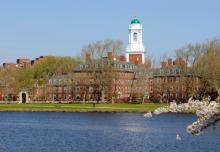 From extremely modest beginnings in 1782, when it opened with just three students, the Harvard Medical School (HMS) has produced thousands of leaders and caregivers with international influence in the fields of science and medicine. It boasts nine Nobel prizes shared between fifteen researchers; one of the most recent going to Linda Buck in 2004 for her discovery of “odorant receptors and the organization of the olfactory system”. Scientists from HMS and the Dana-Farber Cancer Institute (one of the 17 hospitals and research institutions that HMS is affiliated with) have recently published promising results relating to the development of a personalized tumor vaccine for leukemia patients.
From extremely modest beginnings in 1782, when it opened with just three students, the Harvard Medical School (HMS) has produced thousands of leaders and caregivers with international influence in the fields of science and medicine. It boasts nine Nobel prizes shared between fifteen researchers; one of the most recent going to Linda Buck in 2004 for her discovery of “odorant receptors and the organization of the olfactory system”. Scientists from HMS and the Dana-Farber Cancer Institute (one of the 17 hospitals and research institutions that HMS is affiliated with) have recently published promising results relating to the development of a personalized tumor vaccine for leukemia patients.
2. University of Oxford
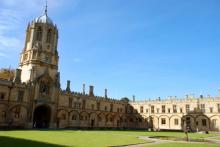 Oxford Medicine has collected sixteen Nobel prizes over the years, one shared in 1945 between Sir Howard W Florey, Sir Ernst Chain and Sir Alexander Fleming “for the discovery of penicillin and its curative effect in various infectious diseases”.
Oxford Medicine has collected sixteen Nobel prizes over the years, one shared in 1945 between Sir Howard W Florey, Sir Ernst Chain and Sir Alexander Fleming “for the discovery of penicillin and its curative effect in various infectious diseases”.
Other notable people include Professor Adrian Harris who “pioneered drug therapies based on blocking the blood supply to tumors”; Professor Peter Donnelly for his work in identifying genetic risk factors for breast cancer, and Professor Herman Waldmann for the development of an antibody therapy for the treatment of chronic lymphocytic leukemia.
3. University of Cambridge
 Of its 26 affiliated Laureates in the field of medicine, one of Cambridge’s most popular Nobel Prize winners is Sir John B Gurdon, “for the discovery that mature cells can be reprogrammed to become pluripotent”. The Department of Medicine’s most recent published achievement is the production of a full three-dimensional model of the structure of an HIV RNA packaging signal, which had previously only been solved in small regions because of technological limitations. The report says that the model can be used as a foundation upon which to base the design of new anti-HIV drugs.
Of its 26 affiliated Laureates in the field of medicine, one of Cambridge’s most popular Nobel Prize winners is Sir John B Gurdon, “for the discovery that mature cells can be reprogrammed to become pluripotent”. The Department of Medicine’s most recent published achievement is the production of a full three-dimensional model of the structure of an HIV RNA packaging signal, which had previously only been solved in small regions because of technological limitations. The report says that the model can be used as a foundation upon which to base the design of new anti-HIV drugs.
4. Johns Hopkins University
 The Johns Hopkins School of Medicine was founded in 1893, four years after the opening of the Johns Hopkins Hospital, which has been ranked number 1 for 21 years in a row by the US News & World Report. Affiliates and faculty of Johns Hopkins Medicine have collected 19 Nobel prizes so far. Latest research includes studies on preventing type 2 diabetes; the formation of new blood vessels from stem cells; and the identification of exercise as a risk factor for heart failure in people with the genetic mutation ARVD/C (arrhythmogenic right ventricular dysplasia/cardiomyopathy).
The Johns Hopkins School of Medicine was founded in 1893, four years after the opening of the Johns Hopkins Hospital, which has been ranked number 1 for 21 years in a row by the US News & World Report. Affiliates and faculty of Johns Hopkins Medicine have collected 19 Nobel prizes so far. Latest research includes studies on preventing type 2 diabetes; the formation of new blood vessels from stem cells; and the identification of exercise as a risk factor for heart failure in people with the genetic mutation ARVD/C (arrhythmogenic right ventricular dysplasia/cardiomyopathy).
5. Stanford University
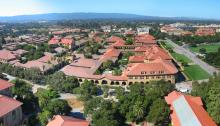 The Stanford School of Medicine claims four Nobel Laureates in total, including faculty and affiliates. Recently published research includes the creation of a bioengineered peptide that acts like a “molecular flashlight”, allowing for the outlines of a tumor to be highlighted with a high degree of accuracy, and also allowing for areas to be targeted for drug delivery. Researchers have also identified a potential new culprit for Alzheimer’s and aging, a protein called C1q, already well-known as an initiator of immune responses.
The Stanford School of Medicine claims four Nobel Laureates in total, including faculty and affiliates. Recently published research includes the creation of a bioengineered peptide that acts like a “molecular flashlight”, allowing for the outlines of a tumor to be highlighted with a high degree of accuracy, and also allowing for areas to be targeted for drug delivery. Researchers have also identified a potential new culprit for Alzheimer’s and aging, a protein called C1q, already well-known as an initiator of immune responses.
6. Yale University
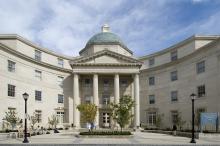 The Yale School of Medicine was founded in 1810, making it the sixth oldest medical school in the US. Dr George E Palade from the institution shared a Nobel Prize with two others in 1974 "for their discoveries concerning the structural and functional organization of the cell". Yale researchers were the first to use chemotherapy to treat cancer, and the first to identify Lyme disease. Recent research has included the discovery of a technique for tracking electrical activity in the brain by inserting fluorescent proteins into neurons, which are then recorded by optical sensors as they respond to changes in electrical signals.
The Yale School of Medicine was founded in 1810, making it the sixth oldest medical school in the US. Dr George E Palade from the institution shared a Nobel Prize with two others in 1974 "for their discoveries concerning the structural and functional organization of the cell". Yale researchers were the first to use chemotherapy to treat cancer, and the first to identify Lyme disease. Recent research has included the discovery of a technique for tracking electrical activity in the brain by inserting fluorescent proteins into neurons, which are then recorded by optical sensors as they respond to changes in electrical signals.
7. University of California, Los Angeles (UCLA)
The David Geffen School of Medicine at UCLA is only half a century old, yet ranks alongside other institutions twice its age. Faculty member Louis J Ignarro shared a Nobel Prize in 1998 with two others for "discoveries concerning nitric oxide as a signaling molecule in the cardiovascular system". Recently published research is about the effectiveness of fish oil at “reversing liver disease in children with intestinal failure who require intravenous nutrition”, when taken for six months.
8. Imperial College London
The Imperial College Faculty of Medicine brings eight major West London medical schools together into one institution. The Faculty has five affiliated Laureates, including Sir Alexander Fleming who shared the prize with two others in 1945 for the discovery of penicillin. Researchers have recently published the findings of a study into an “intelligent knife” that can tell if tissue it comes into contact with is cancerous or not. They have also published research into the metabolites a tumor produces at different stages, making it possibly to determine what stage it is at with a high degree of accuracy.
9. University of Melbourne
 The Melbourne Medical School was the first to educate doctors in Australia, with the first starting their training in 1862. Three alumni have won the Nobel Prize for Medicine, including the first Australian female Laureate, Elizabeth Blackburn, who won in 2009 for "the discovery of how chromosomes are protected by telomeres and the enzyme telomerase". Researchers from the university have recently developed and tested a device that can be implanted in the brain to predict epileptic seizures.
The Melbourne Medical School was the first to educate doctors in Australia, with the first starting their training in 1862. Three alumni have won the Nobel Prize for Medicine, including the first Australian female Laureate, Elizabeth Blackburn, who won in 2009 for "the discovery of how chromosomes are protected by telomeres and the enzyme telomerase". Researchers from the university have recently developed and tested a device that can be implanted in the brain to predict epileptic seizures.
10. Karolinska Institute
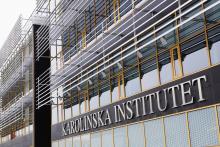 The Karolinska Institute is a medical university that accounts for almost half of all medical academic research in Sweden. It houses the Nobel Assembly, which has been selecting the Laureates in Physiology or Medicine since 1901. This means that five of those Laureates were selected very close to home, including two Institute affiliates in 1982 “for their discoveries concerning prostaglandins and related biologically active substances". Guest Professor of Regenerative Surgery at the Institute, Paolo Macchiarini, performed the first two trachea replacement surgeries using manufactured organs in 2011. Ongoing research includes vaccines for all sorts of conditions, including cardiovascular disease, hepatitis C, tuberculosis and HIV.
The Karolinska Institute is a medical university that accounts for almost half of all medical academic research in Sweden. It houses the Nobel Assembly, which has been selecting the Laureates in Physiology or Medicine since 1901. This means that five of those Laureates were selected very close to home, including two Institute affiliates in 1982 “for their discoveries concerning prostaglandins and related biologically active substances". Guest Professor of Regenerative Surgery at the Institute, Paolo Macchiarini, performed the first two trachea replacement surgeries using manufactured organs in 2011. Ongoing research includes vaccines for all sorts of conditions, including cardiovascular disease, hepatitis C, tuberculosis and HIV.
Image credits: Johns Hopkins Medicine; Michael Marsland/Yale University; Gavin Blue (University of Melbourne); Camilla Svensk (Karlinska Institute)

